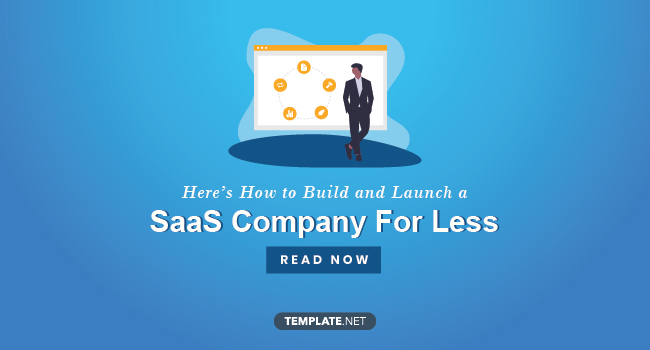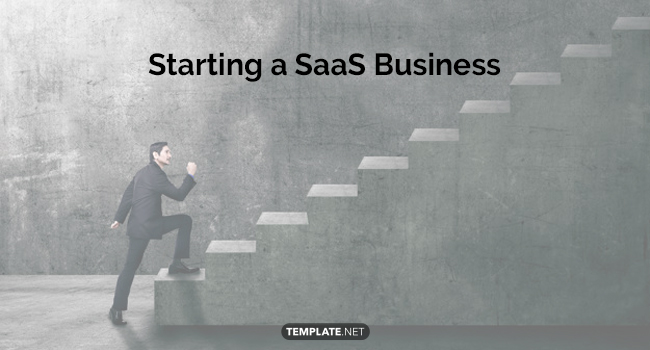How to Build a SaaS Business from Scratch
The global software-as-a-service (SaaS) market is projected to have a 20.21% compound annual growth rate (CAGR) through 2018 to 2023. The growth is already starting to show through the emergence of SaaS companies. If you’re an IT/software enthusiast who’s planning on starting a business, the SaaS market may interest you. So before you start writing your business plan, let’s go over the steps in getting a SaaS business from the ground up.

How to Build a SaaS Business from Scratch
Starting a SaaS Business

The SaaS market continues to grow as many industries rely on SaaS applications to get work done. Cloud computing is no longer an advantage, but a necessity. Jobs get done a lot quicker in a more efficient fashion thanks to its benefits. But before you jump on the SaaS bandwagon, you should know that building a SaaS business has to be precise from the get-go. These steps are a good place to start if you want to pull it off.
Create a Lean Plan

You don’t have to go all out and create a long business plan from the jump. At this stage, a one-page pitch is enough. This format fits SaaS businesses pretty well since they’re always testing new ideas out. Given the constantly changing nature of software, this doesn’t come as a surprise. Your pitch should contain the following components:
Your Strategies
What are you going to do for your business?
Your Tactics
What actions will you take to actualize them?
Your Business Model
How will your idea/pitch make money?
Your Timetable
When should these things occur? Who will do them?
Understand Your Market

Not every customer views a product or service in the same way. The same holds true for SaaS businesses. While many businesses need their products, not every company has a place for them. Ditch the one-size-fits-all marketing approach and identify your primary audience instead. Going for that tactic decreases the chances of trial and paid conversions. By defining your target market, you’ll know who to market your business to and how to market it. You can find your target audience through primary and secondary research. The former covers interviews, focus groups, and polls. Meanwhile, the latter relies on existing information.
Develop a Strategy

Going into a business (especially in the SaaS industry) without a strategy is just setting your venture up for failure. You already know that this is an important part of your pitch, so be smart about this one. One, your strategy should have a one or two-line description of your business’s unique value proposition. Two, it should explain a customer need/problem you’re addressing while offering a solution to that said problem; the solution is typically the product/service you’re offering. Three, the target market(s) should be stated in detail. Lastly, there should be a brief description of your competition. Your strategy should also share the factors that make your venture stand out from them.
Finance Your SaaS Company

Making money means you have to spend it too. You can finance your SaaS business through these options:
Bootstrapping
This tactic gathers funds in unconventional ways. Crowdfunding is one of these ways. Bootstrapping hands you the reins of your business and oversee every aspect. However, the process is slow, so be patient.
Venture Capital Funding
This investment option is concerned with funds provided by investors to startup establishments and rising companies with high long-term potential. This is a nice advantage because you can gain access to channels that would’ve taken you years to get. However, seeking outside investors means you won’t always be in the driver’s seat of your business.
Set Your Sights on User Experience and Customer Service

First impressions count, even for SaaS businesses. Encourage your users to share their feedback within their circles. Here’s one thing you should remember: initial launches aren’t pretty. Weaknesses and lapses will be exposed, and your users will let you know about them. Make user experiences and customer service more pleasant by following these tips:
Kill Critical Bugs Before Your Launch Date
Get rid of them before your users take notice. Don’t forget to keep them up to speed on fixes and other updates to let them know they’re taken care of.
Give Them a Warm Welcome with Onboarding
Send out welcome emails, newsletters, and give thorough tutorials on how to let them use your product/service to their advantage.
Overcommunication Isn’t Real
Even growing businesses make it a point to reach out to their customer bases on a regular basis. Strengthen ties with your potential clients by developing strong connections. The feedback and insights you gain from them can help you make user experience and your product even better.
Use UX to Build Quality Software

UI designs matter. A good portion of your customers aren’t tech experts, so they’ll naturally expect a clear explanation of your product/service. To get your desired UI design, team up with a reputable WordPress/mobile/Drupal/IoT team with a striking portfolio. Be a hands-on facilitator throughout the entire process. Great UI designs keep users and customers engaged through the information they display. They’ll also lessen their frustrations because of the support systems they provide.
Let Your Marketing Commence

When it comes to marketing, you have a lot of options to choose from. You can do your PR yourself—since it’s your business, who better to promote it than you? Content marketing is also a good option. It’s an affordable route, so why not go for it? The strategy has grown in immense popularity over the last decade. Just set up a blog for your primary audience and post away. If you’re up for it, you can do a mix of tactics. Don’t bet on just one strategy and try a few options to see which one gives you the most conversions.
Build Your Team

Go for people who have proficient experience in the technology industry. They should also align with your business’s mission and vision statements. If you want your SaaS business to succeed, your people should be on board with that too.
Get Your Metrics Right

Those numbers you see on dashboards may be annoying, but they’re pretty impactful. Metrics are indicators of how your business is performing, so pay attention to them. Make sure to track metrics that are applicable to your SaaS business for massive growth and improvement.
Starting a SaaS business is equal parts exciting and terrifying. Don’t get lost in the profits they bring before you even begin. There will be obstacle courses when you start building one, so brace yourself for the challenges. If you manage to reach the finish line with these steps, all the time and work you’ve put in will not be for nothing.






